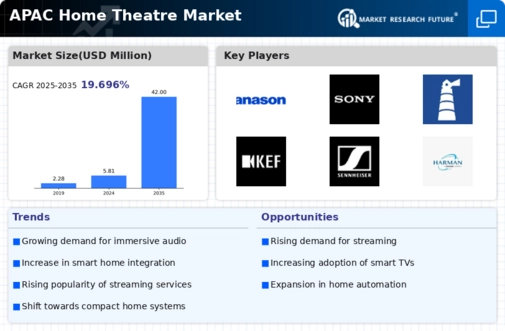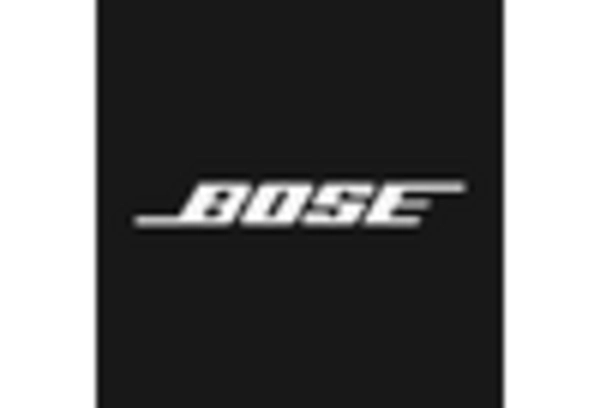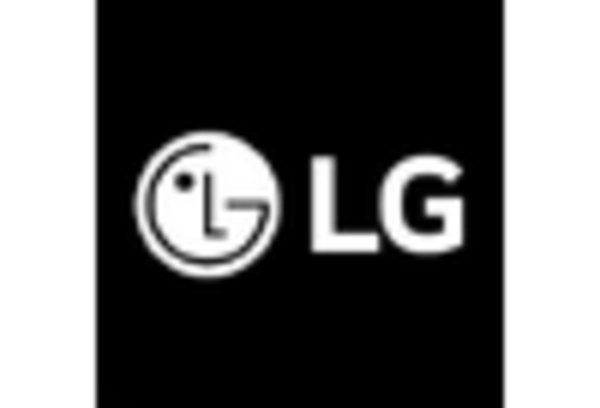Shift Towards Home Entertainment Solutions
The home theatre market in APAC is benefiting from a notable shift towards home entertainment solutions. With the increasing availability of streaming services and digital content, consumers are seeking ways to enhance their home viewing experiences. This trend is reflected in the rising sales of home theatre systems, which have seen an increase of approximately 20% in the last year alone. As more individuals opt to create their own entertainment spaces at home, the demand for comprehensive home theatre setups is expected to rise. This shift indicates a long-term change in consumer behavior, favoring home-based entertainment over traditional cinema outings.
Increased Disposable Income Among Consumers
Rising disposable income levels in APAC countries are significantly impacting the home theatre market. As consumers have more financial flexibility, they are more inclined to invest in premium home entertainment systems. This trend is particularly evident in emerging economies where the middle class is expanding. Reports indicate that household income in countries like India and China has increased by over 10% annually, leading to a greater willingness to spend on luxury items such as home theatre systems. Consequently, this growing affluence is likely to propel the home theatre market, as consumers prioritize high-quality entertainment experiences.
Growing Popularity of Smart Home Integration
The integration of smart home technology is becoming a pivotal driver in the home theatre market in APAC. Consumers are increasingly looking for systems that can seamlessly connect with their smart home devices, allowing for enhanced control and convenience. The market for smart home devices is projected to grow by 25% annually, suggesting a strong correlation with the home theatre market. As manufacturers respond to this demand by developing compatible systems, the home theatre market is likely to expand. This trend indicates a future where home entertainment is not only immersive but also interconnected with other smart technologies.
Cultural Shift Towards Home-Centric Lifestyles
A cultural shift towards home-centric lifestyles is influencing the home theatre market in APAC. As more individuals prioritize spending time at home, the desire for high-quality entertainment options is increasing. This trend is particularly pronounced in urban areas where space constraints make traditional entertainment venues less accessible. The home theatre market is projected to grow by 15% in the coming years, driven by this cultural transformation. Consumers are investing in home theatre systems to create personalized entertainment experiences, suggesting that the market will continue to thrive as home-centric living becomes more prevalent.
Technological Advancements in Audio-Visual Systems
The home theatre market in APAC is experiencing a surge due to rapid technological advancements in audio-visual systems. Innovations such as 4K and 8K resolution displays, along with advanced sound technologies like Dolby Atmos, are enhancing the viewing experience. As consumers increasingly seek high-quality entertainment, the demand for these sophisticated systems is likely to grow. In 2025, the market for high-definition displays is projected to reach approximately $15 billion in APAC, indicating a robust growth trajectory. This trend suggests that manufacturers are focusing on integrating cutting-edge technology into their products, thereby driving the home theatre market forward.

















Leave a Comment